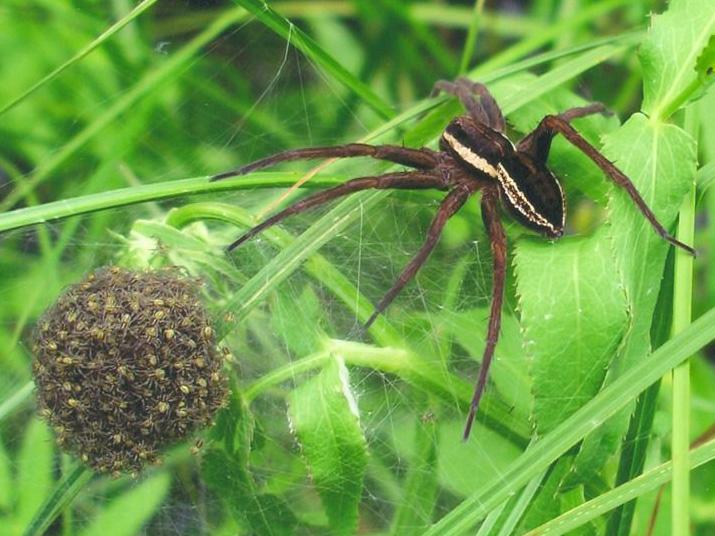Giant spiders the size of rats making a comeback in UK
Up to 3,750 female fen raft spiders believed to be at 12 sites across the UK now
The UK’s largest breed of spiders, which can grow to the size of rats and hunts fish, are making a comeback in Britain.
From near-extinction in 2010 - when only a handful remained as their wetland homes were destroyed by humans - the number of fen raft spiders are now steadily increasing thanks to recent conservation efforts.
The spiders are set to have their best year on record at nature reserves ran by RSBP.

The conservation charity revealed that the most recent survey estimates the total number of female spiders to be up to 3,750 across 12 sites in Norfolk and Suffolk Broads alone.
The spider can spin a web as large as 25cm and can grow to the size of a man’s hand.
“The Fen Raft Spider is one of the UK’s rarest invertebrates and we are proud of the role our reserves and teams have played in its recovery,” Tim Strudwick, the RSPB Mid Yare nature reserves site manager where many of spiders are homed, told the MailOnline.

The fen raft spider has a brown or black body with white or cream stripes along the sides. With a span of up to almost three inches (8cm), they are the largest of the UK’s 660 native species of spider.
The species only lives in fens, marshes and wetlands, using their long hairy legs to skate across the surface of the water.
“These spiders have an important role in maintaining the rich aquatic diversity found in the grazing ditches on our reserves. The females are impressive in size, but also beautiful – they are truly special to see,” Mr Strudwick added.
The spiders are not venomous but are semi-aquatic and can run across the water’s surface to capture their prey. Their diet includes other spiders, damselflies, dragonfly larvae and even fish and tadpoles.
Mr Strudwick added that the spiders can also ben seen at another RSPB site in Norfolk but are “fairly shy”.
They are easiest to spot in grazing marsh ditches from June to September.
He added: “Walking along the meadow trail gives visitors at Strumpshaw Fen the best chance of sightings of the mature females and their glistening nursery webs, so now is the perfect time to make a trip to the reserve.”
RSPB ecologist, Jane Sears, who was also involved in Fen Raft Spider conservation told the paper: “The RSPB has played an important role in the reintroduction of these spiders and means we must continue to restore, manage and protect the wetland habitats where the Fen Raft Spider thrives to ensure the future of not just this species, but many others too.”
Subscribe to Independent Premium to bookmark this article
Want to bookmark your favourite articles and stories to read or reference later? Start your Independent Premium subscription today.


Join our commenting forum
Join thought-provoking conversations, follow other Independent readers and see their replies
Comments